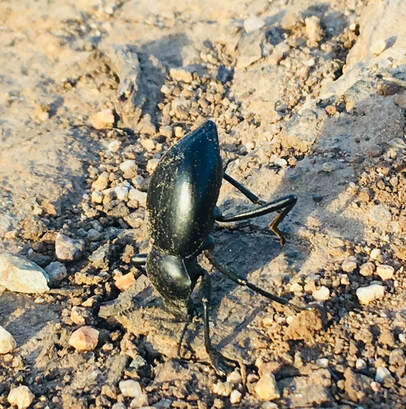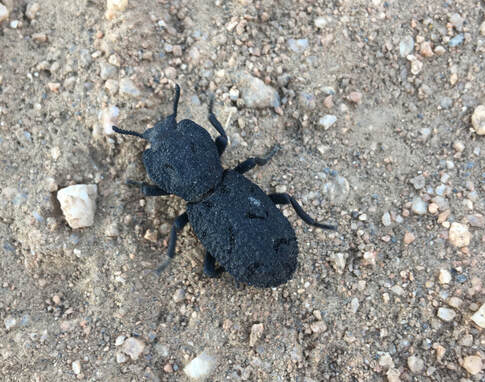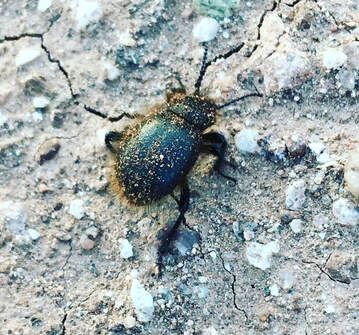My first real introduction to darkling beetles was earlier this year when I was tasked to care for the UCR Entomology department living insect collection used for outreach. I was the caretaker of several species of darkling beetles, all cloistered together in a sand-filled terrarium.
Don’t get me wrong - I had seen darkling beetles before in the wild, hiking paths of the southern California desert where they are numerous. You may know them commonly as “stinkbugs.” Some of these beetles in the Eleodes genus do emit noxious odors in the chemical class quinones from the ends of their abdomens or behind their heads as a defensive mechanism. These darkling beetles are often called head-stander beetles or clown beetles because they stick their rears up in the air when threatened. Most wild animals such as owls and snakes learn to steer clear of these beetles. However, some predators such as grasshopper mice have developed the curious tactic of grabbing the beetle and immediately shoving its rear end into the sand in order to start eating it head first.
These beetles can serve as great pets - even for children! They don’t move too fast, they are durable and resilient when dropped due to their hardened outer shell called elytra. They don’t usually bite when bothered and can be conditioned to handling by humans. Some will survive for a few years in captivity and even reproduce. And they are all around beautiful beetles! Darklings are omnivorous scavengers, often feeding on rotting leaves and dead animals in the wild. However, in captivity, they can be fed fruits and vegetables or even dry pet food. Many beetles are reared for their larval state: the mealworm, which are used to feed pet reptiles and birds.
- Borror, D. J., & White, R. E. (1970). A field guide to the insects of America north of Mexico. Houghton Mifflin Company, Boston, Massachusetts, USA.
- Jaggard, V. (2015). Meet the makech, the bedazzled beetles worn as living jewelry. SmithsonianMag.com. https://www.smithsonianmag.com/smithsonian-institution/meet-makech-bedazzled-beetles-worn-living-jewelry-180955081/ (accessed 02.16.20).
- McMonigle, O. (2012). The Ultimate Guide to Breeding Beetles: Coleoptera Laboratory Culture Methods. Coachwhip Publications. Landisville, Pennsylvania, USA.
- www.bugguide.net
- www.desertusa.com/insects/stinkbug




 RSS Feed
RSS Feed
